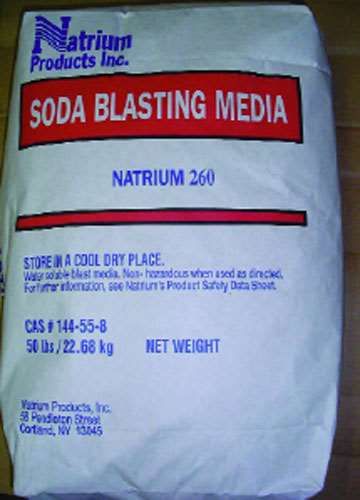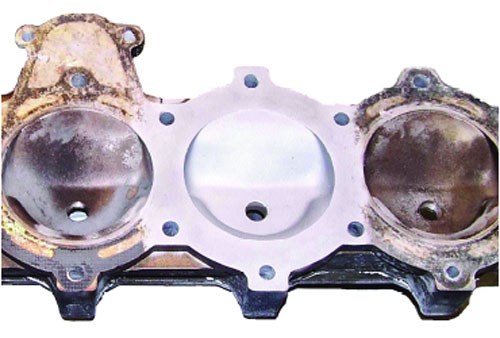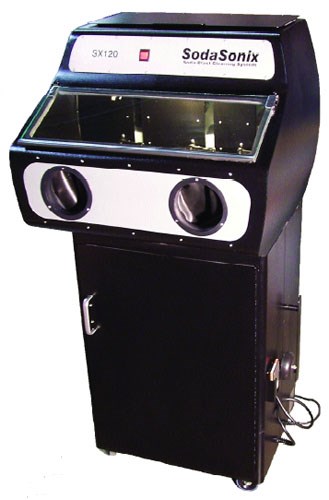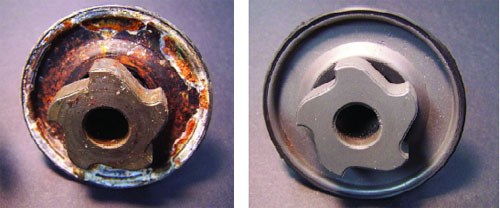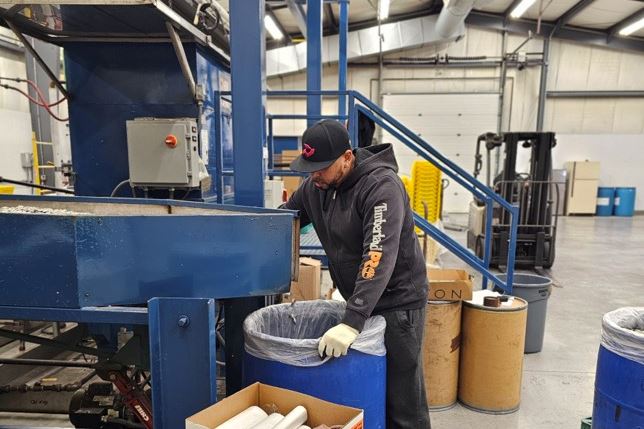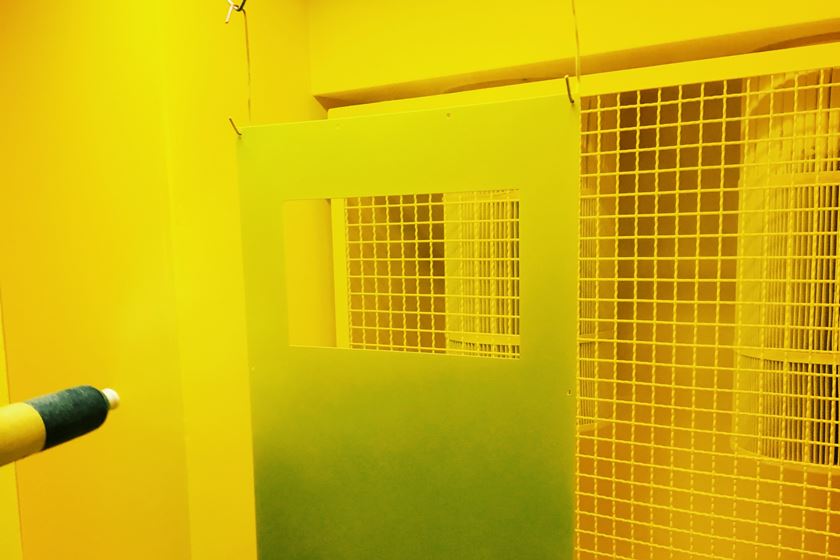Published
Soda Blast Cleaning: Growing Into a Big Industry
Soda blast is a great alternative media for blast cleaning as it breaks up on contact with the surface being blasted, and does not work deeper than the substrate surface itself.
Jim Ottaway
In 1982, the Statue of Liberty was in desperate need of repair. Over the years, many coatings had been applied to the metal in order to protect the statue from water and corrosion, and a method of removing these many layers of heat baked-on protective coatings over a very large area was needed. Those in the business of surface cleaning were quite familiar with a number of possible methods. However, when the conditions of the job were described, most methods had to be eliminated as the work was in an enclosed area and solvent based cleaners were not acceptable. The substrate was thin copper panels with many internal interstices, convolutions and generally difficult places to get into. Physical scraping and digging were out of the question and blast cleaning seemed like the best approach. However, most common blast medias were not acceptable, especially those that were overly aggressive or had to be recycled for economic reasons.
Bicarbonate of soda became the blast media of choice. Nontoxic, non-flammable, economical, water soluble and readily available made soda the method—and it worked. The Statue of Liberty’s delicate skin was cleaned without damage. She stands to this day in complete restoration as a beacon of our heritage—with some thanks to the gentle giant who came to her aid.
To clean a surface that is to be left without roughness or pitting due to blasting, does not have embedded media particles and does not have residual surface contamination, would, in the past, be asking a lot. Not so with soda. In most cases after blasting with soda the part or surface can be dipped or airwashed with water and any residual soda will be dissolved away.
Soda is friable and breaks up on contact with the surface being blasted, and does not work deeper than the substrate surface itself. The bottom line is that soda is aggressive on the material to be removed yet gentle on the substrate below. After blasting the undesired material away with soda, the underlying surfaces showed little or no effect other than a light frosting. This leaves the surface clean and ready for the application of environmental protectants.
Often the choice of soda may be the simplest and most economical method. Once you get used to a new method its hard retreat to the old. When the computer came into existence, a lot of slower, more costly and less accurate methods dropped away, such is the case with soda’s emergence in the process cleaning industry.
Soda comes in various particle size grades and generally has a hardness rating of about one-third of aluminum oxide. Soda manufacturers offer formulations mixed with a percentage of more aggressive medias such as aluminum oxide. These mixtures serve specific needs like turbine blade cleaning where in addition to the gentle nature of soda, there is an aggressive component during the operation.
Jim Ottaway is Technical Director of SodaSonix, LLC.He can be reached at (530) 878-7467. For more information on SodaSonix machines visit www.sodasonix.com.
Bicarbonate of soda became the blast media of choice. Nontoxic, non-flammable, economical, water soluble and readily available made soda the method—and it worked. The Statue of Liberty’s delicate skin was cleaned without damage. She stands to this day in complete restoration as a beacon of our heritage—with some thanks to the gentle giant who came to her aid.
Understanding a New Method
Soda’s birth into the industry has not been an easy one. It was not enough that it was effective, inexpensive, safe to humans and environmentally nonpolluting. When used as a blast media, it created more dust than commonly used medias; as a result, many turned away from it. Even when spent soda is contained it cannot be reused because the particles have changed to a non-flowing mass. An operator familiar with blast systems that recycle media may need convincing before including a method that takes a media such as soda that must be operated in an enclosure and cannot be recycled. To sell the idea takes knowledge of the advantages of blasting with soda.To clean a surface that is to be left without roughness or pitting due to blasting, does not have embedded media particles and does not have residual surface contamination, would, in the past, be asking a lot. Not so with soda. In most cases after blasting with soda the part or surface can be dipped or airwashed with water and any residual soda will be dissolved away.
Soda is friable and breaks up on contact with the surface being blasted, and does not work deeper than the substrate surface itself. The bottom line is that soda is aggressive on the material to be removed yet gentle on the substrate below. After blasting the undesired material away with soda, the underlying surfaces showed little or no effect other than a light frosting. This leaves the surface clean and ready for the application of environmental protectants.
Often the choice of soda may be the simplest and most economical method. Once you get used to a new method its hard retreat to the old. When the computer came into existence, a lot of slower, more costly and less accurate methods dropped away, such is the case with soda’s emergence in the process cleaning industry.
Advantages
Soda has unique advantages. Cleaning an intricate item such as a carburetor, hydraulic components, oxygen assemblies, electrical components, pistons and the thousands of other things of this nature can be done with excellent results, including lower cost in time and material. Soda will blast to a clean, fine surface and when done, the item can be dipped or air sprayed with water, dissolving away any residual soda. This is a significant advantage when used in narrow, possibly unseen, passageways where other medias may lodge and stay. In short, it’s quick, simple and inexpensive. Deburring plastic and soft metal parts and assemblies is a tough job for most blast methods, yet soda does it with selectivity and ease leaving edges sharp and clean.Soda comes in various particle size grades and generally has a hardness rating of about one-third of aluminum oxide. Soda manufacturers offer formulations mixed with a percentage of more aggressive medias such as aluminum oxide. These mixtures serve specific needs like turbine blade cleaning where in addition to the gentle nature of soda, there is an aggressive component during the operation.
Jim Ottaway is Technical Director of SodaSonix, LLC.He can be reached at (530) 878-7467. For more information on SodaSonix machines visit www.sodasonix.com.


